DIY: How to Make a Tension Wrench with a Paperclip

Lock picking is a skill that has been used for centuries, and while it may seem like a mysterious art, it’s actually quite simple once you understand the basics. One of the most important tools for any lock picker is a tension wrench, which is used to apply tension to the lock cylinder while picking the pins. While tension wrenches can be bought online or in specialty shops, did you know that you can make one yourself with just a paperclip?
That’s right, a simple paperclip can be transformed into a trusty tension wrench with just a few easy steps. In this article, we will guide you through the process of making your own tension wrench using a paperclip, so you can start picking locks like a pro. Just remember: lock picking should only be done on locks that you own or have permission to pick. It is illegal to pick locks without proper authorization.
Before we get started, it’s important to note that there are different types of tension wrenches, and the size and shape of your paperclip may determine the type of tension wrench you can create. For the purpose of this tutorial, we will be making a basic flat tension wrench.
Materials Needed for the DIY Tension Wrench
To make a tension wrench out of a paperclip, you will need the following materials:
- A standard-sized paperclip
- A pair of needle-nose pliers
- A file or sandpaper
Note: It’s important to use a standard-sized paperclip for this project, as other sizes may not work well with the lock mechanism.
The needle-nose pliers will be used to bend and shape the paperclip into the desired tool. It’s recommended to use pliers with a small and thin tip for better control.
The file or sandpaper is optional but can be handy for smoothening the edges of the paperclip, making it more comfortable to hold and use.
Step-by-Step Instructions to Make a Tension Wrench
Materials Needed:
- Paperclip
- Pliers
Instructions:
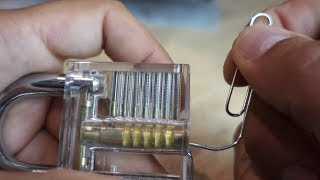
- Start by straightening the paperclip using the pliers. This will help in shaping it into the desired tool.
- Using the pliers, bend one end of the paperclip at a 90-degree angle. This will be the handle of the tension wrench.
- At the opposite end of the handle, use the pliers to create a small hook-like bend. This will be the part that goes into the lock.
- Take the pliers and grip the hook-like end of the tension wrench. Now, bend it slightly to give it a slight curve.
- Check the shape and size of the tension wrench. It should be thin enough to fit into the keyhole of the lock, yet sturdy enough to apply tension.
- If needed, make any necessary adjustments to the shape and size of the tension wrench using the pliers.
- Once you are satisfied with the shape and size, test the tension wrench on a lock to ensure it fits properly and can apply tension effectively.
Safety Note:
It is important to note that the use of tension wrenches and lock picking tools should only be done legally and with proper authorization. Unauthorized use of these tools may be illegal and considered a criminal activity.
Safety Precautions to Keep in Mind
- Wear protective eyewear: It’s important to protect your eyes from any potential harm. Wear safety goggles or glasses to prevent any debris or sharp objects from getting in your eyes.
- Work in a well-ventilated area: The process of making a tension wrench may involve heating or bending metal. Ensure that you are working in a well-ventilated area to avoid inhaling any fumes or smoke.
- Use appropriate tools: When making a tension wrench, use the right tools for each step. Using the wrong tools can lead to accidents or ineffective results.
- Keep fingers away from sharp edges: Be cautious when handling the paperclip or any other sharp objects. Avoid touching sharp edges and keep your fingers clear to prevent cuts or injuries.
- Do not force or overextend the paperclip: The paperclip may have limitations in terms of its strength and flexibility. Avoid applying excessive force or overextending it, as this can cause it to break or snap unexpectedly.
- Be mindful of fire hazards: If you are using heat to bend or shape the paperclip, be aware of fire hazards. Keep flammable materials away from the work area and have a fire extinguisher or water source nearby just in case.
- Take breaks and rest: DIY projects can require concentration and time. Make sure to take regular breaks and rest your hands to avoid fatigue or strain.
- Dispose of waste properly: Once you have completed your tension wrench, dispose of any waste materials properly. This includes sharp or pointy objects such as unused portions of the paperclip.
Remember, safety should always be a top priority when engaging in any DIY project. By following these precautions, you can minimize the risk of accidents or injuries and ensure a successful and safe DIY experience.
Tips and Tricks for Using the Tension Wrench
1. Choose the Right Size
When using a tension wrench, it’s important to choose the right size for the lock you are trying to pick. The tension wrench should fit snugly into the keyway, allowing you to apply the necessary pressure to turn the lock.
2. Apply the Right Amount of Tension
Applying the right amount of tension is crucial when using a tension wrench. Too much pressure can cause the pins to bind, making it more difficult to pick the lock. Too little pressure, on the other hand, may not provide enough resistance for the pins to set. Experiment with different amounts of tension until you find the sweet spot.
3. Use a Light Touch
When using a tension wrench, it’s important to use a light touch. Applying too much force can cause the tension wrench to slip or break. Instead, apply steady, gentle pressure to the wrench and focus on feeling for feedback from the lock as you pick it.
4. Practice Makes Perfect
Picking locks with a tension wrench takes practice. Start with simple locks and gradually work your way up to more complex ones. As you gain experience, you’ll become more familiar with the feel of different types of locks and develop a better understanding of how to use the tension wrench effectively.
5. Pay Attention to Feedback
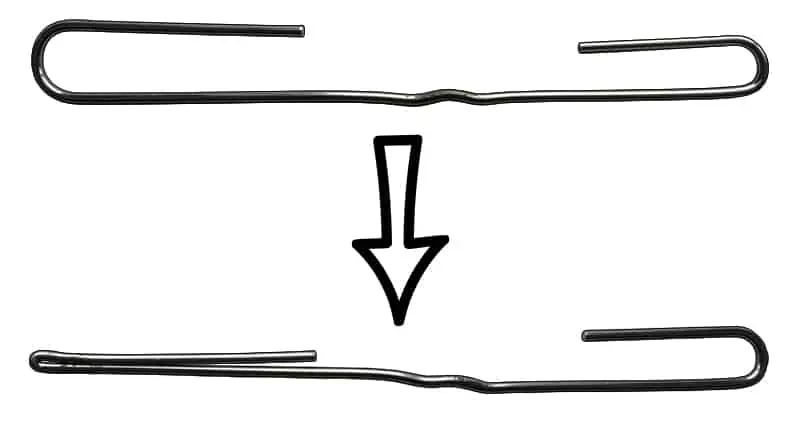
When using a tension wrench, pay close attention to the feedback you receive from the lock. Listen for clicks or other sounds that indicate the pins are setting. Also, pay attention to any movement or resistance you feel as you apply pressure to the wrench. This feedback can help guide your picking technique and improve your success rate.
6. Use Different Tension Techniques
There are different techniques you can use when applying tension with a tension wrench. Experiment with techniques such as “bottom of the keyway” or “top of the keyway” tension to see which works best for you. Different locks may respond better to different techniques, so it’s helpful to have a few different methods in your arsenal.
7. Be Patient
Picking locks takes time and patience. It’s important to remain calm and composed while using a tension wrench, as rushing can lead to mistakes. Take your time and focus on the task at hand, and you’ll be more likely to successfully pick the lock.
8. Use Proper Tools
While a paperclip tension wrench can be effective in a pinch, using proper lock picking tools can greatly improve your success rate. Invest in a high-quality tension wrench designed specifically for lock picking. Not only will this make the picking process easier, but it will also minimize the risk of damaging the lock.
9. Respect the Law
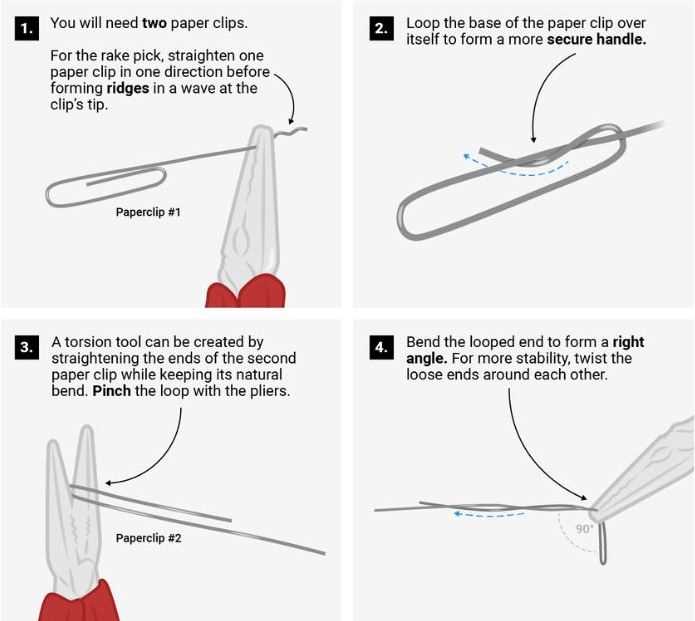
It’s important to use lock picking skills responsibly and ethically. Lock picking should only be used for legal purposes, such as gaining access to your own property or in the case of a lockout emergency. Engaging in illegal activities or attempting to pick locks without permission is a violation of the law and can result in serious consequences.
10. Seek Professional Help if Needed
If you find yourself struggling to pick a lock or encounter a lock that you are unable to pick, it’s best to seek professional help. A professional locksmith has the knowledge and experience to handle a wide range of locks and can help you gain access to the locked space without causing damage or compromising security.
Common Problems and How to Troubleshoot
While making a tension wrench with a paperclip is a relatively simple DIY project, there are a few common problems that you may encounter. Here are some troubleshooting tips to help you overcome these issues:
1. Paperclip is too weak
If you find that the paperclip you are using is too weak and bends easily, you can try using a stronger paperclip or even a thin piece of metal. Look for a paperclip with a thicker gauge or try bending a larger paperclip to the desired shape. Additionally, you can reinforce the paperclip by wrapping it with tape or heat-shrink tubing to give it more strength.
2. Paperclip is difficult to shape
If you are having trouble shaping the paperclip into the desired form, you can use pliers or a small vice grip to help you bend it. Simply hold the paperclip with the pliers or vice grip at the point you want to bend and apply gentle pressure to shape it accordingly.
3. Tension wrench is slipping
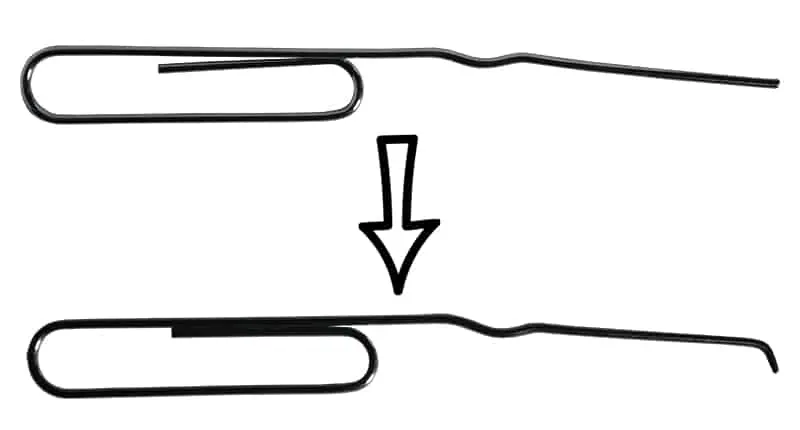
If you find that the tension wrench is slipping when you try to use it in a lock, it may be because the paperclip is too smooth and not providing enough grip. To fix this, you can roughen the surface of the paperclip by using a file or sandpaper. This will create a bit of texture and improve its grip on the lock.
4. Tension wrench is not the right size
It’s important to note that tension wrenches come in different sizes, and using the wrong size can cause problems. If the tension wrench you made doesn’t fit properly into the lock, you may need to try bending it into a different shape or use a different paperclip with a more suitable thickness. Don’t be afraid to experiment until you find the right fit.
5. Lock is not turning
If you are unable to turn the lock even with a properly shaped tension wrench, it could be due to other factors such as incorrect picking technique or a lock that requires more skill to open. Remember to apply steady but gentle pressure to the tension wrench and use a pick to manipulate the lock pins. If you are still having trouble, consider seeking guidance from experienced locksmiths or practicing more to improve your technique.
By following these troubleshooting tips, you should be able to overcome common problems that may arise when making a tension wrench with a paperclip. Remember to be patient and persistent, as lock picking can be a skill that takes time and practice to master.
Alternative Uses for a Tension Wrench
A tension wrench is a useful tool for locksmiths and lock pickers, but its applications are not limited to just that. Here are some alternative uses for a tension wrench:
1. Emergency Door Opener
If you find yourself locked out of your house or car, a tension wrench can be used as an emergency door opener. Insert the tension wrench into the keyhole and apply gentle pressure while using a tool like a screwdriver or credit card to push the lock pins. With some practice and patience, you might be able to gain access without damaging the lock.
2. Fixing Mechanical Locks
If you have a mechanical lock that is sticking or not working properly, a tension wrench can help to fix the issue. Insert the tension wrench into the keyhole and apply gentle pressure while turning it in the direction that the key would normally turn. This can often help to release any stuck pins or mechanisms.
3. Adjusting Furniture Locks
If you have furniture with locks, such as a desk or filing cabinet, a tension wrench can be used to adjust the lock mechanism. Insert the tension wrench into the keyhole and apply gentle pressure while turning it in the direction that the key would normally turn. This can help to loosen or tighten the lock, allowing you to find the perfect fit.
4. Crafting & Jewelry Making
A tension wrench can be a versatile tool for crafting and jewelry making. It can be used to hold small objects in place while you work, such as beads or wire. The thin, flat shape of a tension wrench makes it easy to slide under and grip delicate materials without causing damage.
5. Fishing Tool
In a pinch, a tension wrench can be repurposed as a makeshift fishing tool. The hooked end of the tension wrench can be used to retrieve small objects that have fallen into tight spaces, like a dropped key or a piece of jewelry. Just be careful not to use too much force and cause further damage to the object or the surrounding area.
These are just a few alternative uses for a tension wrench. With a little creativity, you can find even more ways to make use of this versatile tool in your everyday life.
Legal and Ethical Considerations
Laws and Regulations
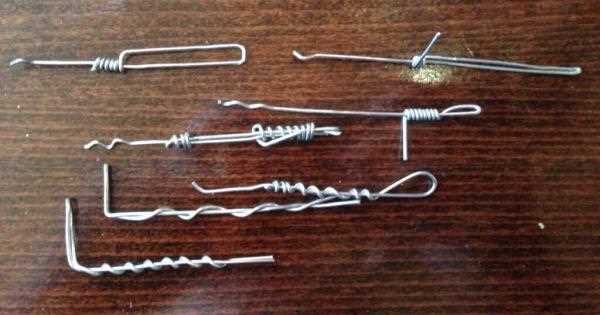
Before attempting to create a tension wrench using a paperclip, it is important to be aware of the laws and regulations in your jurisdiction regarding lock picking tools and activities. In many places, possession and use of lock picking tools without proper authorization is illegal. Make sure to familiarize yourself with the specific laws and regulations in your area before proceeding.
Using Information Responsibly
Even if lock picking tools are legal in your jurisdiction, it is important to use the information responsibly. The techniques and knowledge shared in this DIY guide should be used only for lawful purposes and to improve your own understanding of lock mechanisms. It is unethical and illegal to use this knowledge to gain unauthorized access to someone else’s property.
Respecting Privacy
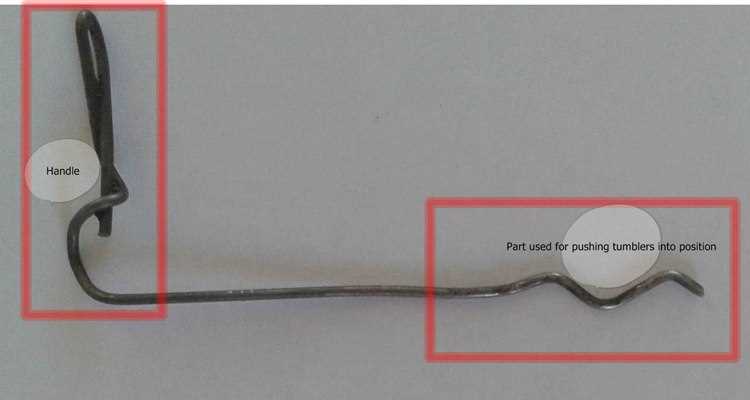
Respecting the privacy and security of others is paramount. Under no circumstances should you use the knowledge gained from this guide to violate someone’s privacy or compromise their security. Engaging in lock picking activities without proper authorization can have serious legal and ethical consequences.
Professional Locksmiths
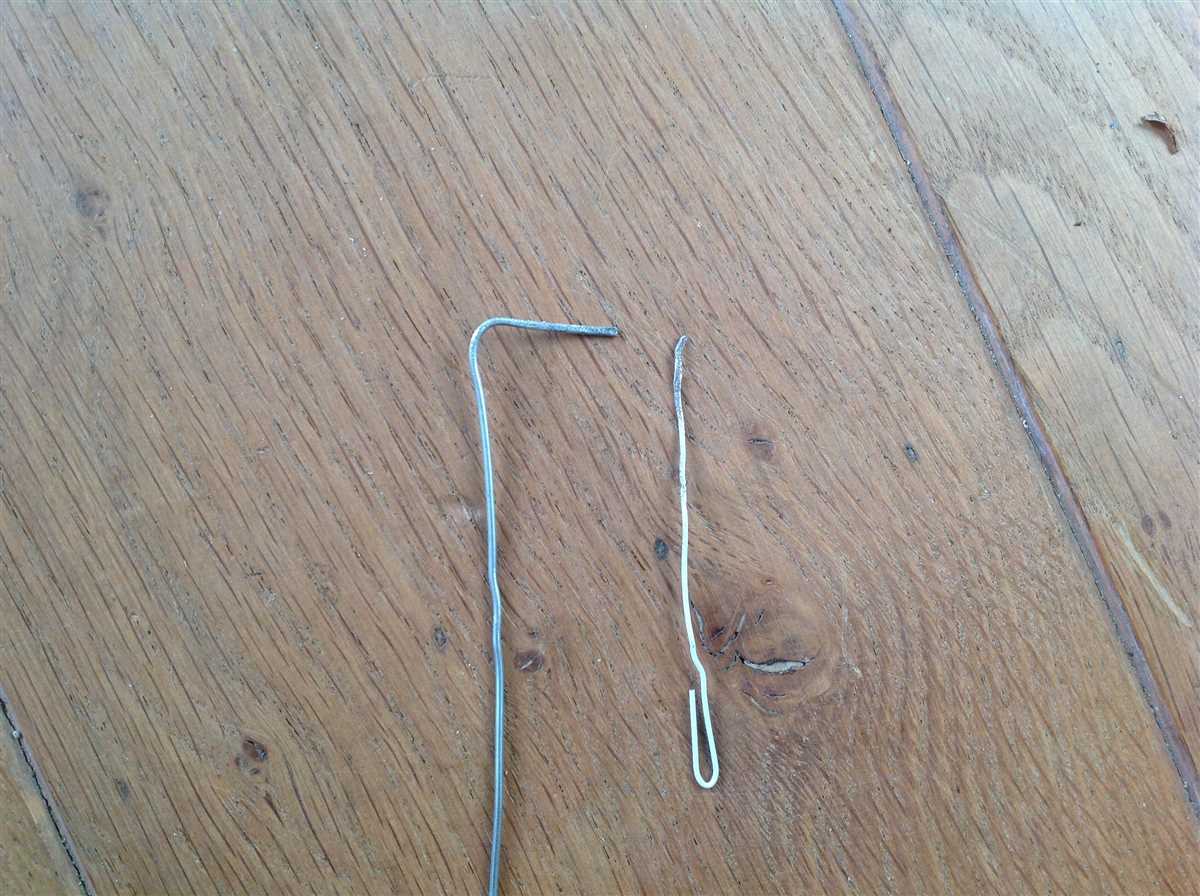
It is worth noting that lock picking is a skill that is typically practiced by professional locksmiths who have undergone proper training and have the necessary certifications and authorizations. If you find yourself in a situation where you need assistance with a lock, it is always recommended to seek the help of a licensed professional locksmith.
Disclaimer
This DIY guide is for educational purposes only and does not encourage or condone any illegal activities. The author and the website cannot be held responsible for any misuse or illegal use of the information provided. Always make sure to consult and comply with the laws and regulations in your jurisdiction.
FAQ
What materials do I need to make a tension wrench with a paperclip?
To make a tension wrench with a paperclip, you will need a paperclip, pliers, and a file or sandpaper.
Is it difficult to make a tension wrench with a paperclip?
No, it is not difficult to make a tension wrench with a paperclip. It can be done using basic household tools and doesn’t require any special skills.
Can I use a tension wrench made from a paperclip on any lock?
A tension wrench made from a paperclip can be used on many types of locks, but it may not work on more complicated or high-security locks.
Are tension wrenches legal to use?
In most places, owning and using a tension wrench is legal as long as you have a legitimate reason, such as being a locksmith or using it for educational purposes. However, laws vary, so it’s always best to check your local regulations.
Video











